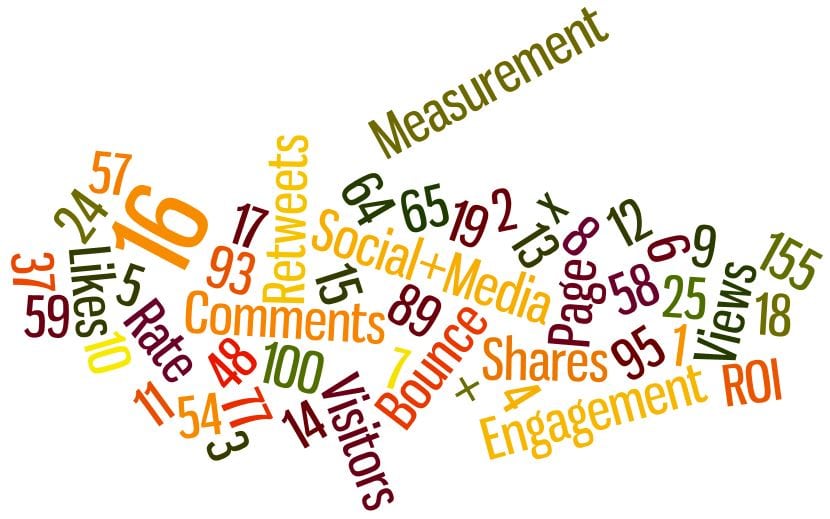
[Editor’s Note: In the fourth article of this five-part series produced with partner PublicRelay, a media monitoring and analytics firm, we examine some of the challenges of reputation management. The first article in the series ( PRN, November, 7, 2017) looked broadly at communications data and measurement. The second article (November 21) looked at how data could be mined to offer significant operational direction to companies. The third article (December 12) reported on a forum where 12 senior PR leaders commented on the state of data and measurement.]
What a time to be talking about reputation. First there was a global hubbub over how President Trump reacted to a New Year’s Day statement from N. Korean leader Kim Jong Un about his country’s nuclear weapons being able to reach the U.S. Then, a few days later, a book claiming to be based on countless hours of observation and interviews paints an unflattering portrait of the president and his team.
We’ll switch the focus from political reputation and image to measuring brand and corporate reputation, which often is thought to be more problematic than garden-variety measurement of communications efforts. Part of the reason is because it’s nuanced and requires more human intelligence. As one PR exec says, “Measuring reputation is very context-heavy…it’s not just a few keywords…you have to be looking at a variety of factors that make up reputation and looking at them constantly.”

Chief Brand and Communications Officer, Aflac
Catherine Hernandez-Blades, chief brand and communications officer, Aflac, provides an example. “We are launching My Special Aflac Duck this week at CES…a social robot, it is designed to support children undergoing cancer treatment…Aflac is committed to putting them into the hands of all of the approximately 16,000 children diagnosed with cancer in the U.S. annually, at no cost to the child or family,” she says.
“Yet, we know people are reluctant to believe a corporation would do something so wonderful without an angle, which is deeply unfortunate as it’s a philanthropic rather than a commercial venture…My point being, even when you do good for the sake of doing good, you’re still going to have cynics. In terms of measurement, you have to find a way to capture the impact of the behavior of cynics and that can be very difficult.”
Reputation as the New Measurement

Executive Director, Corporate Reputation, KPMG
For Andrew Bowins, executive director, corporate reputation, KPMG, “Reputation is the new measure of communications.” He believes communicators need to “abandon the old model of communications measurement and recognize that insights, understanding of stakeholders and their perception of a brand/company are the most important measures.”
Bowins goes a step further. He says this new measure of communications means communicators must accept that “traditional measures like impressions, reach and media clips largely are meaningless without insights attached. It also means that the profession has to abandon separate measures for [social] channels and instead look at the aggregate of conversations across social media, traditional media, online and word of mouth. This is a real challenge for any professional hanging onto the traditional measurement model of communications.”
Timing Is Critical
Bowins and Hernandez-Blades agree reputation management needs to be a regular part of communications measurement.
“The biggest hurdle is when to measure reputation,” Bowins says. “Too often a company’s reaction to issues is the starting point for reputation measurement and management. If you begin [measuring reputation] during a crisis, then it’s too late. Reputation has to be managed in real time, over time and benchmarked against defined themes and goals.”
Adds Hernandez-Blades, “All good measurement requires a strong baseline, as well as relevant and accurate data that is meaningful and benchmarking.”
Bowins notes, “You need to have a set of defined reputation goals, stories and themes that you drive in good times and bad. This multi-layered model of measurement is critical to reputation management and one that does not come easily if you are still counting clips, measuring reach and looking at impressions alone.”
What Gets Measured?
A cliché is that the conversations people are having about a company define its brand and reputation. What should be measured to determine reputation?
Hernandez-Blades suggests measuring corporate governance as a start. Aflac conducts an annual survey of private and institutional investors. Three years ago, the first year of the study, 6 in 10 investors would not invest in a company without a stellar CSR reputation. The elements of which are most commonly workplace procedures, corporate governance and citizenship. In 2017, that number rose to 8 in 10.
Bowins adds, “It is critical to listen twice as hard as you speak. Understanding the sentiment and themes [good or bad] that people say about your brand is the first step toward measuring reputation. Once you have the ability to listen and collect the data that shows trends in perceptions, you can set a baseline or benchmark for your reputation goals. Match those insights with the measurement of clearly defined stories, themes and attributes and you will begin to see the whole picture.”
Budget Concerns
Turning to cost, Bowins believes large budgets are not needed to measure reputation and unlock insights. One needs simple tools that capture and organize data from online, social and traditional media. The key is finding a vendor, partner or in-house expertise that can analyze the metrics and derive insights from the data. “This is a required skillset of the modern communicator,” he says.
Start small and grow, Bowins counsels. “Start with defined audiences and a handful of reputation attributes like trust, integrity, citizenship or product quality. As a starting point, align your themes and measure them against a finite group of journalist, influencers, analyst or bloggers. Once you lock that group down, add another group and grow...refine your listening engine.”
Always ask your senior leaders, “What is the cost of not managing our reputation and not knowing what people say and think about the brand until it is too late?’”
A significant problem, Bowins believes, is some PR pros have been slow to evolve and adapt. “Once you unlock the insights, you have the keys to manage your reputation and the ability to listen to signals in real time and over a period of time. You also have the ability to benchmark reputation to points in time, competitors or with key stakeholder groups.”
Adds Hernandez-Blades, “At Aflac we use this data to inform our communications strategy. And, because we measure outcomes—think results vs. activity—we can see the needle move in almost real time.”
Both believe another challenge is avoiding getting lost in the data and actually unlocking meaningful insights that will shape communications recommendations. “You have to always remind yourself,” Bowins says, “the data is only as smart as the questions you ask. You must know what questions to ask.”
Note: This content appeared originally in PR News, January, 9, 2018. For subscription information, please visit: https://www.prnewsonline.com/about/info
Editor's Note: A profile of next-generation communicators, the 5th installment in this series, is scheduled for January 30, 2018.
CONTACT: [email protected], [email protected]
